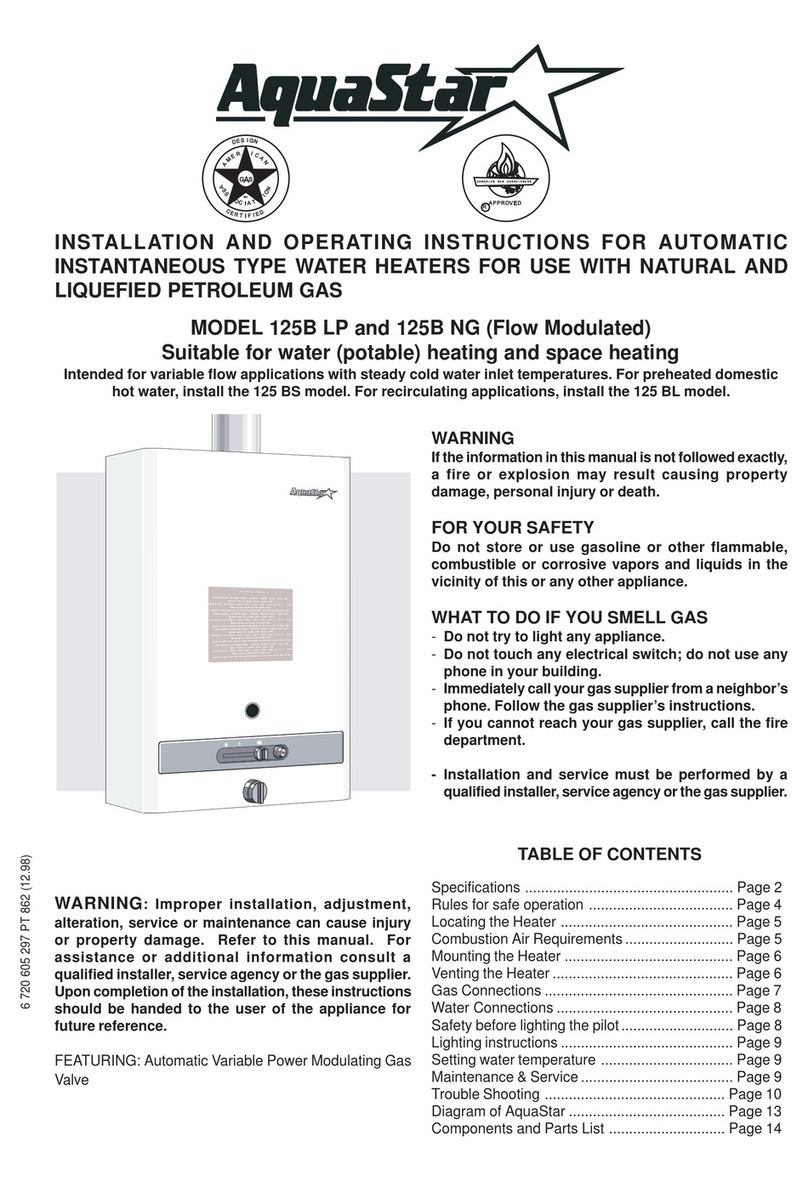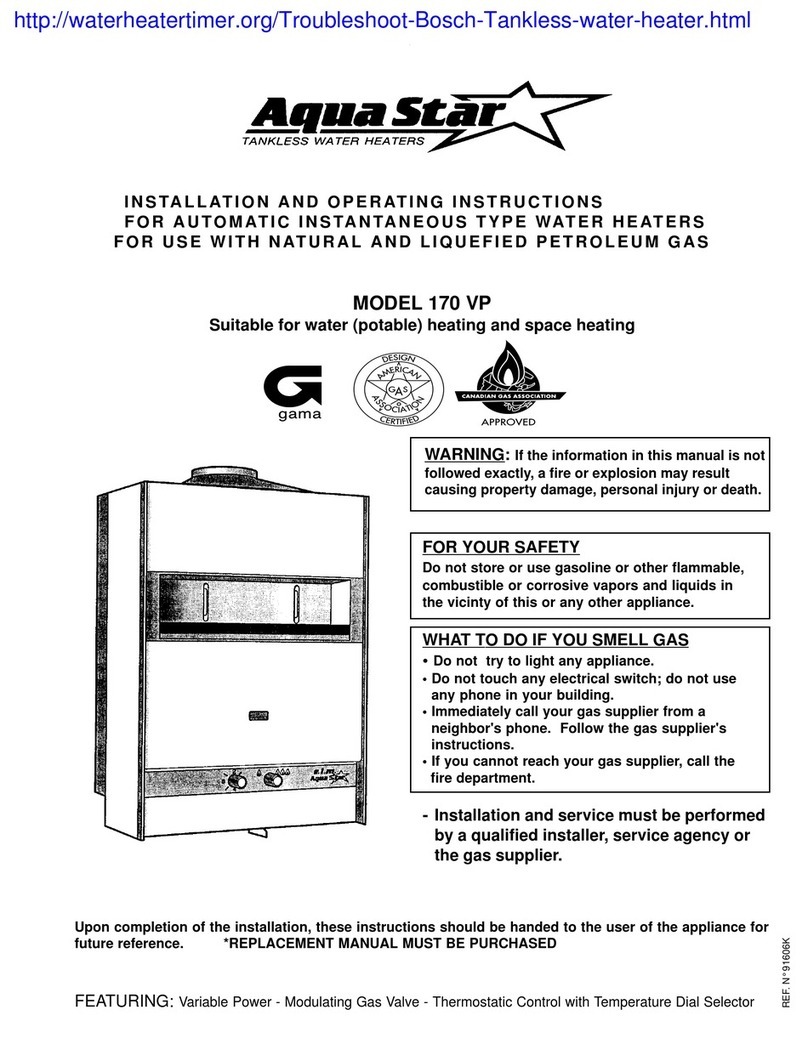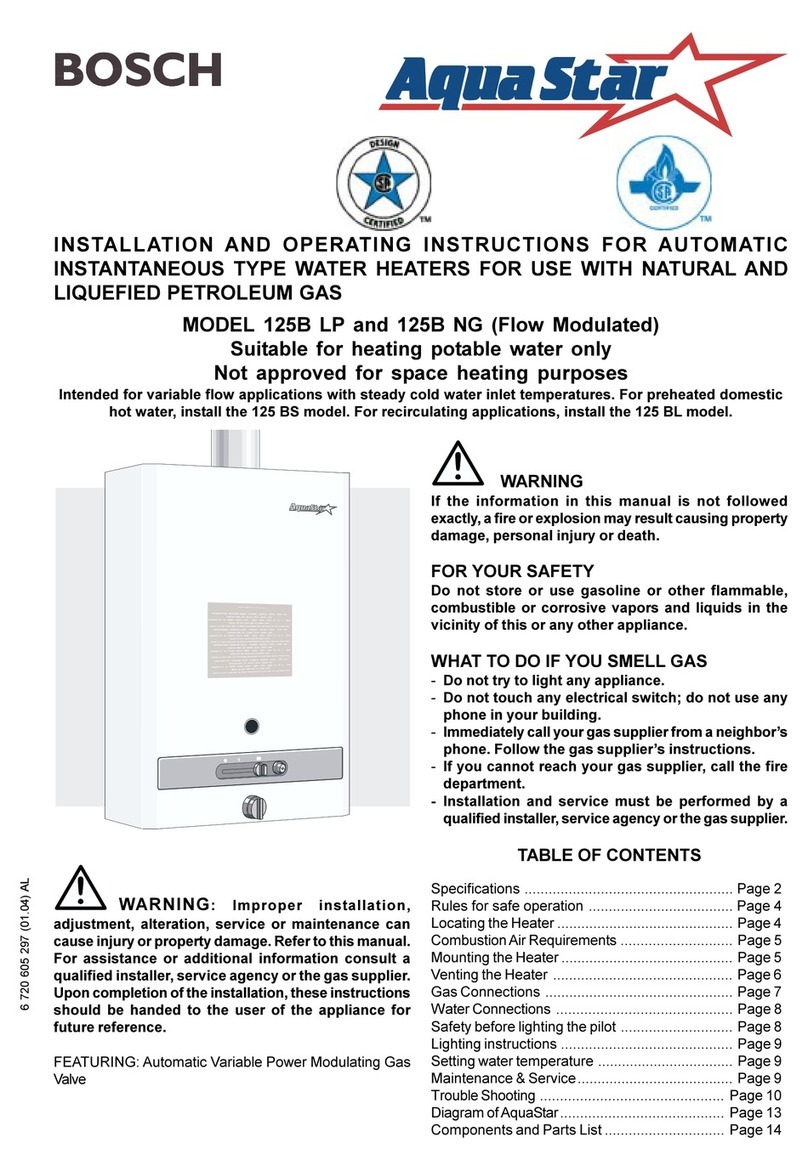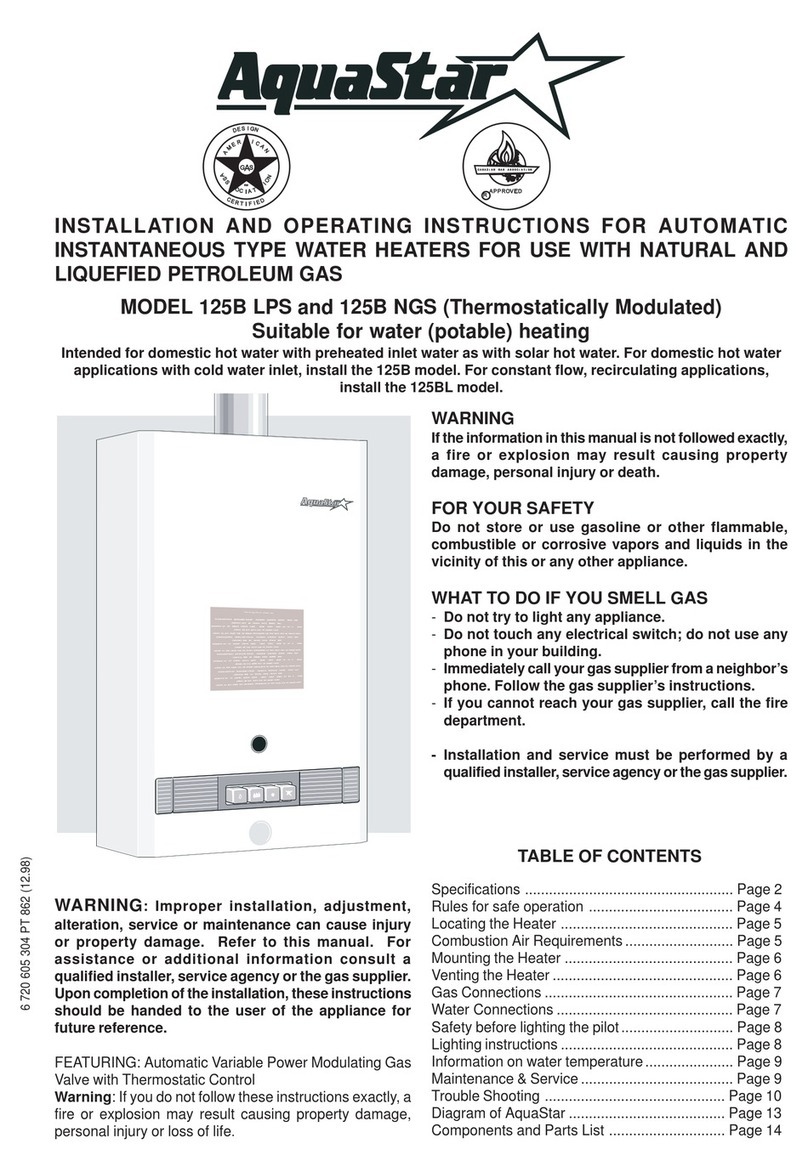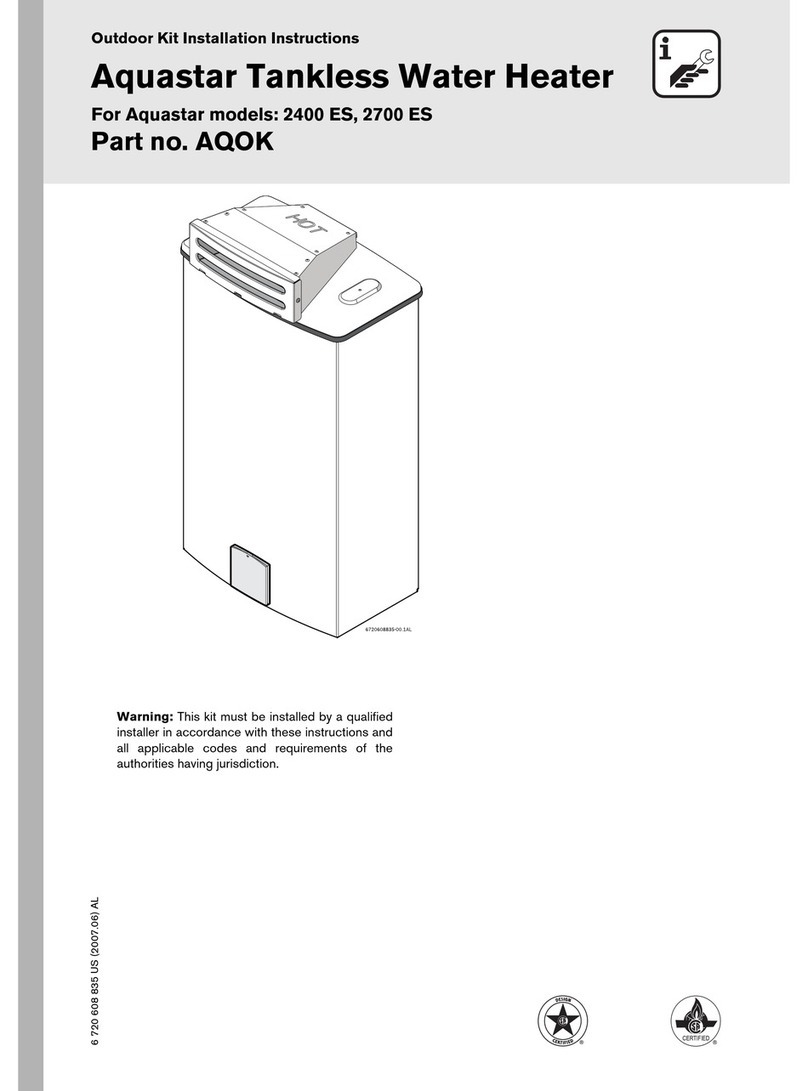5
through the flue. Confirm that your Aquastar is venting
properlywhenall these otherappliancesare running. See
section on venting.
Donotobstructtheflow of combustion and ventilation
air to the appliance. If installed near a clothes dryer it is
very important that the dryer be properly vented. Failure
to properly vent a dryer could result in a gradual
accumulation of lint on the water heater fin coils and
burners, leading to a dangerous condition of venting
blockage and poor unsafe combustion.
4. Yourhot waterlinesshouldbekeptshorttosaveenergy.
It is always best to have hot water lines insulated. Having
a floor drain or sink nearby is handy in case you need to
drain water from your heater.
WARNING:
The water in this water heater is cold and
alwaysremains cold except forthe times thathot water is
being used
DO NOT INSTALL IN AN AREA WHERE IT
COULD FREEZE.
This heater is neither designed for nor approved for
outside installation.
WARNING: Flammable materials, gasoline,
pressurized containers, or any other items or articles
that are potentially fire hazards must NOT be placed
on or adjacent to the heater. The appliance area must
be kept free of all combustible materials, gasoline and
other flammable vapors and liquids.
COMBUSTION AIR REQUIREMENTS
Observethefollowing instructions concerning combustion
air.
Appliances located in unconfined spaces:
a) An unconfined space is one whose volume is greater
than50 cubic feetper1000Btuper hour ofthecombined
ratingofallappliancesinstalled in the space. That would
be 5850 cubic feet for the AquaStar 125X alone.
b) Inunconfinedspacesinbuildings of conventional frame,
masonry, or metal construction, infiltration is normally
adequateto provide air forcombustion, ventilation, and
dilution of flue gasses.
Appliances located in confined spaces:) The confined
space must be provided with two permanent openings,
one commencing within 12 inches of the top and one
commencing within 12 inches of the bottom of the
enclosure.Each openingmust have a minimum free area
of one square inch per:
- 1000 Btu/hr if all air is taken from inside the building.
- 2000Btu/hr ifallairistaken fromtheoutsidebyhorizontal
ducts.
- 4000 Btu/hr if all air is taken from the outside by direct
openings or vertical ducts.
Louvers, grills and screens have a blocking effect. If the
effectivefreearea is not known,increase the sizes ofyour
openings by 75% if your louvers are wood and by 30% if
your louvers are metal. Refer to the National Fuel Gas
Code for complete information. In buildings of tight
construction all air should be taken from outside.
water heater installation in bathrooms, bedrooms or any
occupied rooms normally kept closed. See the section
below on locating the heater.
4. You must vent your heater. See section on Vent Pipe
Connections, Page 6.
5. The appliance must be disconnected from the gas
supply piping system during any pressure testing at
pressures in excess of 1/2 Psig (3.5 kPa).
Theappliancemust be isolated from thegassupply piping
systembyclosing its individual manual shutoffvalveduring
any pressure testing of the gas supply piping system at
test pressures equal to or less than 1/2 Psig (3.5Kpa).
Theappliance and itsgas connection must be leaktested
before placing the appliance in operation.
6. Keep water heater area clear and free from
combustibles and flammable liquids. Do not locate the
heater over any material which might burn.
7. Correct gas pressure is critical for the optimum
operation of this heater (see specifications on page 2).
Gaspipingmust be sizedtoprovide the required pressure
at the maximum output of the heater, while all the other
gasappliancesare in operation. Check withyourlocal gas
supplier,andseethesectiononconnectingthegassupply.
8. Shouldoverheating occur orthe gas supplyfail to shut
off,turnoffthe gassupplyat the manualgasshut offvalve
on the gas line.
9. Do not use this appliance if any part has been
underwater. Immediately call a qualified service technician
to inspect the appliance and to replace any part of the
control system and any gas control which has been
underwater.
PROPERLOCATION FOR INSTALLING YOUR
HEATER
Carefully select the location of your new heater. For your
safety and for proper heater operation, you must provide
anabundantsupplyofcombustionairandaproperventing
installation.
Theheatermaystilloperate even when improperly vented.
It will, however, be less efficient and could eventually
damagetheheater. Itcouldevenresult in human sickness
or death due to oxygen deprivation and carbon monoxide
poisoning. Follow the guidelines below:
1. Place your heater as close to a vent or chimney as
possible.
2. National building codes require that you do not install
this appliance in bathrooms, bedrooms or any occupied
rooms normally kept closed.
3. Simultaneous operation of other appliances such as
exhaustfans,ventilation systems clothes dryers, fireplaces
orwoodstoves couldcreateavacuumeffectin your home
which could cause dangerous combustion by-products to
spillbackintoyour home rather than ventingtotheoutside
